Selling sustainability - PODCAST TRANSCRIPT
March 18, 2024 at 12:00 p.m.Editor's note: The following is the transcript of an live interview with Kris Gray of LP Building Solutions. You can read the transcript below, listen to the podcast or watch the video.
Heidi J. Ellsworth: Hello and welcome to this month's RLW. Um, this is a very special one on a Friday afternoon, and we are have a topic that is timely and incredibly interesting. My name is Heidi Ellsworth, and I'm the president of Roofers Coffee Shop. And we are here today to talk about selling sustainability sponsored by our friends at LP. Um, we, this is just gonna be a great webinar that you're going to be able to use throughout your company. Um, it really is timely and what's happening with our economy and in our culture today would be Kris Gray with LP Building Solutions. Kris, welcome to the show.
Kris Gray: Hi, Heidi. Thanks for having me again. I'm Kris Gray. I'm a resource manager with Louisiana Pacific or LP at the, at our Seola Mill in Seola, Michigan. Um, I guess a little bit about myself. I grew up in northern Wisconsin. Uh, I live in northern Wisconsin, still. We're in the, the up of Michigan. Our, our mill is, um, but I live about an hour west of here in, in northern Wisconsin. Uh, about 30 minutes from where I, I actually grew up and that, uh, that's why I became a forester. So I grew up hunting and fishing, uh, loving the outdoors, uh, loving everything about it. Uh, I've got a cousin who's a, a wildlife biologist, and, uh, he's a little bit older than me, so I watched him go through college and, and get that job, and I thought, ah, I, that that'd be something I want to do.
And, and so when I went to school at UWSP, uh, university of Wisconsin, Stevens Point, they have a big, uh, natural resources program. So I went in kind of undeclared natural resources and, uh, lucked into a summer job, uh, forestry job, and really enjoyed that. So I thought, uh, well, geez, this is, uh, why not forestry there? There's far more jobs in forestry than wildlife. Um, and I actually had a, uh, a professor in one of my survey courses my freshman or sophomore year, and he was a wildlife professor, and he said, A forester will do more wildlife habitat management in, you know, one timber sale than most wildlife managers will do in a career. And it was like, all right, that's, that's what I gotta do. And, um, uh, after college I ended up, uh, working for a paper company as an intern, uh, which was, you know, kind of a timber tech position, setting up timber sales. And then I, I got a full-time position with 'em after a year of that, and, uh, was a procurement forester for a paper company for 10 years. And then, uh, pandemic hit and my mill shut down. So, uh, I had a little hiatus from the industry for, uh, just a couple months, and then, uh, worked for a utility for about, just shy of a year, and then came to LP in, uh, the fall of 2021. So, wow.
Heidi J. Ellsworth: Great experience.
Kris Gray: Yeah. Thank you. Uh, I've been the resource manager here at Ola, uh, for two, two years basically now. And, uh, and that's kind of a fancy, fancy title. I'm, I'm the forester, uh, for the plant. I, I buy all the wood for the mill, and I manage our, our sustainability program, um, as well as, um, manage our, our, our fiber needs. So I buy the wood, I sell the, the byproducts, um, and, uh, and make sure that we're, we have enough, uh, wood on hand and in the pipeline to run the plant.
Heidi J. Ellsworth: So, let's go. Kris, speaking of that, let's first of all talk about the importance of, um, sustainability in building products. And specifically we're talking about, you know, wood and I mean, obviously that's what so many buildings are built up. So talk to us a little bit about the importance of that.
Kris Gray: Sure. Um, so basically, especially when you're talking about housing, homes, buildings, um, you know, sustainability is, has gotta be high on the list because, uh, I mean, I'd like to be here a long time. My kids are gonna be here a long time, hopefully, and their kids and, and on down the line. So if we, if we're building with things that aren't sustainable, um, that really hurts, hurts, the, the, the prospects of the future. So, um, you know, wood is a, is a durable, sustainable building product. It's renewable. Um, and, and it's, you know, when you break it down, it's made of carbon, right? And carbon is a, is a, you know, hot topic today, but it's a, uh, it's a naturally growing and recurring and renewing resource that we can manage. We know how to manage it, and, uh, and we can promote, um, healthy forests that do all kinds of other things for us besides provide wood.
And, um, we get a, a durable building product out of it. We have, you know, working vibrant forests that provide places to recreate, they clean our water, clean our air, um, sequester carbon. Uh, and, and really all of that is, is still conducive to having a healthy and bright future. Um, and for me, sustainability is really about the future. So you, you, you as a forester, um, you know, when I'm overseeing a timber harvest or, or buying wood from a timber harvest, all the things I'm looking at, either when setting up a timber sale or it's being executed, it's being harvested, is what is that gonna look like 30, 60, a hundred years down the road? And all those things we're doing are to promote the regeneration and make sure that that forest is intact and continuing to function. Um, it's not like a, you know, there's a lot of building products that we use that, you know, they're mined or extracted, and sure, you can reclaim the site, but you can't, you know, make more of it. There's only so much of it available. Um, wood, we can grow more into perpetuity.
Heidi J. Ellsworth: So, yeah. And we're gonna, you know, I, I'm in the Pacific Northwest. I live up in the mountains, and that's exactly, I, you know, I really, what you're talking about, managed forests are healthy forests, especially with all the forest fires and everything that is happening out there right now. I don't think that's ever been more true than today.
Kris Gray: Absolutely. Yeah. It's, it's really, um, you know, and your part of the world is different than my part of the world, but you general, um, you know, we, and I'll get into this later too. I'm sure we will, but you can, you can let the forest just do its thing, right? Like, don't touch it, let it go. Uh, and it will go through its natural processes. Um, but we've removed a lot of the natural things that happen in a forest and how forests are, are, you know, naturally evolved to work in the ecology. Uh, fire is one of 'em. We suppress fire, right? Um, there's all kinds of things that we, we are, we are here and there's no way to, to disentangle humans from the, the current forest conditions. And like in the lake states, we live and work amongst and within the forest. You know, my, my house is in a subdivision in the trees, you know? Yeah. So we can't let forest fires run through there. Mm-Hmm. So in the absence of those natural disturbances, we kind of get to play that role and, and, and, uh, you know, get forest product out of it. So it's a, it's a, it's a win-win.
Heidi J. Ellsworth: It is, it is. And I think it takes, you know, a corporate, I mean, as we always say, things start at the top, right? It has to be a corporate objective, and LP has really been on the forefront of that. And for everyone who's on, we're getting some great comments in the chat. A lot of people are here who we know. I'm so happy to see everyone. Um, but you know, a lot of, Kris, as you know, a lot of roofing contractors also do siding, and so they are working with LP. We just had Christina Hill in here saying we love LP, um, which is so great. So, um, talk to us a little bit about LP sustainability commitment and what, what they're really doing.
Kris Gray: Sure. And I mean, LP is a, we're a, we're, we were originally GP, you know, in Georgia Pacific, Georgia Pacific, 50 50 plus years ago, spun off Louisiana Pacific, and that's why we're Louisiana Pacific. They're like, well, the parents GP, uh, LP. Um, so we were at, at the beginning, uh, uh, always a forest products company, but we had, you know, we had sawmills, we had OSB mills oriented Strandboard Mills. Inciting is really kind of a, a newer thing, um, in the history, in the 50 year history of the company. But we've always been a, a forest products company. And, um, you know, today we really have five pillars of, of that, uh, of that sustainability, um, commitment. And, you know, any forest product company needs to be committed to sustainability, or you don't have a future, right? If you, if you don't make sure you have enough wood in your wood basket, you can't operate your plants.
Um, so, uh, those five pillars are really governance, governance, people, environment, products, and communities. And, and a core value of the company is do the right thing always. And, and it, it's a great way to boil down all of those five pillars, right? Um, my main, my main focus in those five pillars are gonna be, I mean, always people, right? Both our people and the people in our communities and our customers and their safety and wellbeing and all that. But then our environment, um, you know, with, with the forest, you know, the environment, right? Um, products. And then our communities, um, you know, our, our local communities that our mills are in, and that we, you know, again, our customers are in. So if we do the right thing and we focus on doing the right thing, we're gonna be sustainable. It's, it's kind of, they go hand in hand. So
Heidi J. Ellsworth: It, it does go. And, and I,
Kris Gray: Right, I was just gonna say, um, you know, for anybody who wants more of this, we have a ton of information, really solid information on our website, lpcorp.com. And a really easy way to find it is just keyword search sustainability. And you'll find our sustainability report, our forestry brochures, um, you know, are, are anything you can ever want to learn about LP and sustainability is there. So way more than I could ever, you know, speak to in this. So,
Heidi J. Ellsworth: And actually, I went through that. I went through the report, it was really interesting, very beautiful and easy to digest. So, um, you can find that link to the site and information on Rivers Coffee Shop directory for LP. So check it out. Um, but we're gonna talk a little bit about moving forward on, you know, forestry management and particularly Aspen. And so, Kris, before we go into this, I have to say, I was, and I should have known this, but I was, when as I was learning and, you know, first getting involved with you and LP and everything like that, and I saw that it was Aspen, I was just like, wow, that's so awesome, because we have Aspens where, you know, in our yard, and they come up and they grow up through your grass. They are just like the most, you know, they'll grow anywhere and in, in our region. And I thought, how brilliant. That makes so sense, because they are so prolific. So talk to us about Aspen, um, and LP and Forest manage management.
Kris Gray: Sure. Um, well, I guess, and, and I'll, I'll say this, that I'm gonna be speaking really from a, a lake stick, lake, excuse me, lake stick centric position, um, you know, Michigan, Wisconsin, Minnesota, but it is the same tree, right? Aspen. Um, we, our, our two main species that go into our products are Aspen for, uh, trembling Aspen and big tooth Aspen. The aspen that you're seeing is gonna be predominantly trembling Aspen. So, I mean, it's this, it's the same species. It's, it's a little different, looks, maybe a little different in the mountains than it does here in the Lake States. Um, but you would, if you came to the Lake States, you'd be like, Hey, that's Aspen, and, and you would, you would recognize it. So, um, the management is a little bit different, um, but the tree is the same, and the life history of the tree is the same.
So, and ecology is very similar. So, um, you know, it's a, it's a pioneer species. So, I guess what I want to, I, and I'm gonna try very difficult to keep my jargon, you know, on, on where it makes sense. Um, but the, uh, there's when, when I met my wife, not to get on a tangent, I told her at the time I was a stumpage buyer, and she just nodded along and, and it was like a year later, she was like, what, what does that even mean? You know, you buy, you don't buy stumps. I was like, oh, no. Stumpage is standing timber, you know, you buy standing timber from landowners as stumpage. Um, anyways, uh, so I, I, I'm gonna try to keep my jargon to where people understand what I'm, what I'm talking about. But, so Aspen is a pioneer species.
Um, that means that basically say out west a big fire, even in the lake states, a large fire or wind event blows down the current trees that are there. Uh, in the west, again, in the mountains, it might be an avalanche, it might be a Mm-Hmm, just a standard placing fire. And, and Aspen can either blow in on seed. It's a very light seed. It looks like a, like cotton almost blowing in around June in most of the northern tier of the country. Um, and there's a tiny little seed, it's like a millimeter and a half, two millimeters wide, and it's floating on this little cotton. Um, cottonwood is a aspen species as well, and okay, it just makes more of it. Um, so anyways, that very light speed travels a long way on the wind. And it typically, where it lands, it's not gonna grow, but if it lands in a fresh burn or, um, you know, a suitable basically mineral soil, it'll grow from seed.
Um, the other way that Aspen grows back and, and pioneers a site is say in the Lake States, we, we have a lot of mixed forest where it's northern hardwood, which is very, uh, sugar maple dominated. Um, there'll be aspens mixed through, because at some point when that stand was originated, there was one of those seeds landed in the right spot and, and grew an aspen tree. Well, they're spread out throughout that hardwood stand. Well, a wind event comes through, or, you know, in the early 19 hundreds, people logged, um, right. And basically clear cutting was the, was how you log them. Well, when a wind event or a, an avalanche or a logging happens to a stand that has an aspen component, and you open up the soil and, and open the soil to the sun, those aspen roots resprout, right? And when you said aspen's coming up in your yard, it's the roots of the adjacent trees sprouting, right?
Um, from, from latent buds on the, on, um, roots. So that's really what we do in forest management of Aspen is, is that we take an existing aspen stand, we clear cut it or cop is harvest it, and those roots sprout back, right? Um, and that's, that's, they do that for a, a few reasons, but you can't get that response unless you, you know, cut all the trees, basically, or most of the trees you need the sun, the sun warms the soil that initiates that sprouting response. It's, it's really about the temperature of the soil. So if you have a lot of shade, you won't get that spouting response. Um, and that, so a, an existing aspen stand that may be at, at maturity has three, 400 trees per acre or stems per acre will sprout back at 15 to 30,000 stems per acre. Um, wow.
And then it, it naturally, because it's a pioneer species, those are kind of, uh, definitionally, sun loving trees. They, they don't do well in shade. Um, they need to be able to be in full sun. So as they grow and they get tighter, the, the weaker ones basically die off and, and the growth gets concentrated on the more dominant stem stems they get, they grow very straight because of that. They're fast growing, they grow straight. Um, again, they're sun loving, so they don't hold on to lower branches. The branches die and fall off as the, as the top branches keep reaching for the sky and the sun. And, uh, and you get a very nice new stand, right? So, mm-hmm, um, again, and then it's a pioneer species. So one of the definitional things of pioneer species is they don't live forever. They, they're, they're not long lived trees and the mountains, they can live a little longer.
Um, but the, the, the individual trees above ground are really on, especially in the lake, say it's a really o they're about limited to about 80 years on a, on a weaker site, 50 years or a sandier dryer site only 50 years. So, and they can live longer than that on really premium sites, but they're not, they're not in any sort of good quality, you know, they're, they're rotting on the inside. They're not really growing that much anymore. They're just kind of sitting there. So, um, in in Aspen forestry or forest management, you're basically managing that stand of Aspen to be Aspen, to maintain it as Aspen. 'cause if it's just left to its own devices, it's going to, it's going to, um, go through the, the stages of, um, succession and become a different type of timber, a different forest type. Right? It's gonna move towards more long-lived species, more shade tolerant species, um, that are growing underneath those aspen trees.
'Cause there's Aspen not growing under Aspen unless the, the over storage removed. So yeah. Um, basically the, the, um, that conserves that timber type and it, uh, and that habitat type, that's very important for many species of wildlife that we, we have, um, edge species like white-tailed deer, um, rough grouse are a couple of the game species that, that, uh, you know, hunters and, and, and land managers are very interested in maintaining aspen on the landscape for that. Um, but there's all kinds of associated species of songbird and, and, um, you know, small mammals and everything that, that use that timber type. And so we can manage that timber type both to, you know, we can cut it and regrow it very simply, um, without a lot of inputs. And then we can maintain that timber type as, you know, because the amount of ground being managed is, is very small compared to the whole, um, you know, forest broadly. So, um, that's, that's really what we're doing in Aspen management.
Heidi J. Ellsworth: That I think that is so interesting. It's a crop. It's basically, I mean, I grew up on a ranch or farm, but I mean,
Kris Gray: But you, it, it can be, yeah.
Heidi J. Ellsworth: Yep. You're establishing all this wildlife and conserve, um, conservation too, so I love it. And then really, when you look at, you know, taking it that one step further, that wood is just a great building material for, um, sustainability. Talk about that a little bit, Kris.
Kris Gray: Sure. Yeah. So wood in general is, it's a fantastic, uh, building material. We've been building homes out of it for literally as long as people have been, been around, um, right. We've been using wood to make shelter. Um, and, and one of the reasons it's, it's readily available, right? It's, it's, um, it's durable, it's strong and, and flexible. Um, and it's, it's, I'm trying to find the right word. It's, um, it can be used in a lot of different ways, right? A tree can be turned into flake, you know, this stuff, uh, which is what our OSB in, in siding is made out of and mean, that's what the aspen trees get turned into. And then you can press that into a board that can be, you know, basically turned into any shape you, you want or need. Um, but I mean, my desk is made of wood.
There's wood paneling in my office. The, in most homes, the, the structure of the home is built out of wood, you know, dimensional studs. Um, so, so what is very, um, it's very durable and it's very flexible. And, and I mean that in the way that it's literally flexible, but it can be used in many different ways, um, to, to, you know, build and, and protect a home. Um, so in that, it's very resilient, um, and, and strong, right? Right. Uh, it reduce waste and emissions. And, and a lot of that comes from, if we're using wood, wood is sourced from sustainably managed and, and regenerative forests that our forest, no matter what, right? We can have a timber sail or a harvest, and that forest never ceases being a forest. There's a blip where there's maybe not an overstory, but the understory is still there, the ground level is still there, the carbon in the soil is still there.
We're not removing any of that. Um, it, and it grows back, right? So it's still a functional forest from an ecology standpoint. Um, a lot of other building materials just, they're just not sourced in that way. So they, even though they might store carbon, uh, depending on what they're used for, uh, the process of getting that material is very carbon intensive. A lot of carbon is released, um, a lot of, and then it's, it's just, you're not, you're not recouping any of it in any of the process. Maybe once it's in the building, it's, it's being stored there. But, um, that's it. We're, um, from a carbon standpoint, especially wood is, is being stored throughout the process. So you're, it's stored in the tree, it's stored in the soil of the forest, um, once you use it and built, make a product out of it, and this goes on a home or in a home, it's stored in that home for, you know, a hundred years, 50 to a hundred years.
And then, unless that home goes, is unfortunately burned in a, in a home fire, um, that carbon is gonna be locked up in that product in a landfill after it is changed out, or, you know, the home is demolished and, and a new home is built. Um, and then once it's in a landfill, it's there forever, basically. Indefinitely. Yeah. So, um, it's, it's, and, and from my perspective, the forest is still there, right where that wood was sourced. The forest is still there growing, you know, growing new wood, growing new trees, and being a home for animals, being a place to, for humans who recreate, um, cleaning the water, cleaning the air, it's still doing the things that a forest does. Whereas other products, they're sourced from oil, they're sourced from, you know, a, a basically a, a, a small mine. It, you know, that's all it, it, once you do that, it's, and there it is, you know, it's, it's not a functional forest throughout the process. So,
Heidi J. Ellsworth: Yeah. And not regrow, not re um, regrowing. Basically it's the, the new forest is coming in. Um, well, and when you think about taking that, and I want you to show your bag again and your flakes, because that, um, is really what you're able to take and from that create this great building product, um, with smart side. So talk, let's talk a little bit about how that process.
Kris Gray: Sure. So, uh, I'm gonna keep this high level, or as high level as I can. So basically, the trees are, are growing in the forest, right? Um, and they're, they're harvested. And in the lake states, again, they're, they're cut by a, a machine or a person. They're skidded to the landing, they're put on a truck, they're brought to the mill or in some cases, put on a truck, brought to a train car, and then brought to the mill, uh, via rail. Once they're here, that log or those logs are brought into the mill, they get to bark. The bark comes off, the bark is then burned for energy to power the process. And if we don't use all of it, we ship it off to a different facility that burns it for biofuel. So we don't, we don't waste any of that. It's, it's utilized.
And then that debark log goes through what's called a flaker or strand, or a wafer rise, basically a disc of knives that logs are laying in that wafer. And it comes across this way, basically with the grain, it makes these flakes. And these flakes are, are, you know, just what it says, it's a flake of wood or a strand of wood, and, you know, quite thin. But that's about the re the representative size. Those go through a process. They're, they're dried. The fines that come off of the f flaker. So this kinda stuff, uh, some of that ends up in the board, but a lot of it ends up in our fuel system for our dryers. So, we dry this flake, you know, wood is about 50% water when it, when it's cut and harvested and delivered to the mill, um, we dry it down to about 5% water, or under 5%, I should say.
And then it goes through a, a blending process. So these flakes are, you know, they're not, they're just loose flake. They're dried. They go through a, a blender it, which is like, just, it sounds like a big drum that's spinning. Uh, our smart guard process is applied. So that's resins wax. Um, zinc bore eight is, is applied in that in glues basically, or applied in that blending process. And so these flakes get coated with the glue, the, the resin, the wax, and that zinc that protects our siding. You know, for 50 years of our 50 year warranty, our 50 year substrate warranty, every single flake is coated in that zinc bore eight, and those waxes and resins. And then it gets laid out onto a mat. There's a mat under a giant forming machine that drops these out. And it, it's, it's not random. It's literally they're laid.
One former lays 'em this way, and then the next former lays 'em this way and then this way. And you get that oriented, that's what oriented strand board or OSB, it's, it's the, the strands are oriented in different directions over and over until you, you build a big thick mat and then it's pressed into a board, and that's where the strength comes from. So I've got a piece of siding here. There's that, there's that mat after it's pressed. Yeah, this is about that thick when it goes into the press, and then it gets wow compressed into this. And that's a solid, it's solid wood. I mean, there's, there's the wood plus the resins and the zinc. Um, and then there's a paper overlay on our siding. So that's where we get this wood drain that's actually pressed into it. Um, so that's a, it looks like cedar, this is our cedar finish.
Yeah. Um, but again, it's OSB and it's, it's, uh, very durable. It's very flexible. Um, if anybody's familiar with LP, you've seen our videos where people grab a 6, 2 16-foot pieces of lap siding, and it's doing this. Yeah, it's fine. You know, it's, it's flexible and strong. Um, but that's the, that's the quick and dirty. It gets, the edges get shaped. Um, and that's literally a profiled edge that gets cut into it. And then painted, or, or primed, I should say, the face is primed. The, the paper overlay is actually pre-primed. It's, it's soaked with resin and primer. So the face actually doesn't get painted here at the plant. It's already that color. And then we ship it off to either be per to, you know, to a contractor who's gonna paint it before it goes on or after it's on the house, or to a pre-finished facility that's gonna paint it before the, the final customer gets it.
Um, so that's, that's, uh, you know, down and dirty, how smart side is made. Um, like I say, the, the, the key there is that the, the protection comes from the coatings that are applied to the flake, the individual flake. So there's protection on the outside with the paint and the, and the finish, obviously, but it's protected from the inside from rot. And that's where we get that 50 year warranty. And, uh, and then it's, it's still functionally and it's still wood, so it moves with the house houses that are made of wood move. Um, right. You know, the expanding contract with the, with the elements, with moisture, with heat. Um, so does smart side, 'cause it's still wood. Um, this still expands lengthwise and, and, you know, it doesn't swell obviously, but it, it moves just like natural wood would move. Um, so it, it's very, it, it, it doesn't fight against the house. Some finishes don't move. Um, they're more rigid, but they're put on a house made of wood and the, and the wood and the house is still gonna move. So, yeah. Um, that's the, the, the short and dirty on it. So
Heidi J. Ellsworth: I think, I mean, just listening to you and listening how that's compressed, I think you're gonna have some people who are gonna say, we need a, um, plant tour. So be ready. Yeah. Out there, there's gonna be some plant tour requests going on. 'cause I just find that fascinating and would love to see that process. But I think, you know, it kind of brings us back to what we were talking about earlier with the aspens and the forest manager, uh, management and how that works. Now let's talk about why the Aspen works within, um, smart side, because that seems to be really one of the key, um, elements of success.
Kris Gray: Yeah, absolutely. Uh, so siding, you can make OSB out of just about every anything. You can't make siding out of any, any species. Um, so Aspen is, is kind of king for, for siding. Uh, and part of the reason is it's nice whitewood. So you can see that that's, it's very white. The, those are aspen logs in that picture. It's a very whitewood, those are big.
Yes, they are. Um, those are, those are mature in, in my, uh, parlance. Right? Yeah. Um, so the, the color is important and, and the a it's also clean wood. There's very little in there. There's very little pitches or I mean, there's actually, there's obviously sap and water in Aspen, but it's not like a soft wood that has a pitch, literal pitch, um, that if pressed aboard it, it bleeds through and you can see it. Um, Aspen has, um, so it, that's, that's the one thing is the color. Another thing is the, um, you know, the ease of management. We already talked about it. We cut Aspen down. It grows back. As long as we implement the right civil culture, which is the science of forestry and, and forestry regeneration, as long as we implement the correct harvest on the correct sites, it's going to grow back.
And, and that very ease of use from a management standpoint, it's fast growing and it grows straight. So we get nice straight grain in that wood. Very, very uniform. Um, and it's fast growing. So, from a wood strength property in hardwoods or, you know, deciduous trees, aspen's a, it's very soft wood, but it's, it's a hardwood in the, in the, um, description of, of wood types. Um, you want fast growing 'cause then you have wide rings and very uniform wood. Um, the difference in soft wood are pine species, pine and spruce species. You want slow growing, you want very tight rings for, for, for strength. Um, southern yellow pine is not very strong. It doesn't make a very strong two by two by four compared to, you know, a hundred, 150 year old northern white pine. So anyways, um, I don't getting on a tangent, but, so the wood properties very straight, very strong.
Um, and, and aspen's a low density hardwood. So it can, it can take the resins and be pressed into this very dense board and cross-sectionally. You can see how dense that is. Yeah, it, it, like I say, it's solid wood with no voids. If you, if you held up normal OSB like sheathing or flooring, there's voids in there. It's not solid. It's not as solid as siding. Um, or our smart side. So, Aspen allows you to get that very uniform, very solid board that is strong, flexible, rot resistant, um, all the things we need in a, in a durable piece of, uh, you know, wood that's gonna be on the outside of a home for 50 plus years. Right? So, um, and, and Aspen lets us do that. Um, like I say it, it takes the resins we need, how we need it to take it, it presses how we need it to press. It doesn't bleed any color 'cause it's white. Um, and, and it's very durable.
Heidi J. Ellsworth: Yeah. And it's fast growing
Kris Gray: And yes, and fast growing.
Heidi J. Ellsworth: I've seen that myself, how fast they grow. Yes. Yeah, absolutely. It's amazing. Um, I wanna remind everyone, you can ask questions, make comments. If you have any thoughts in the chat, please, um, ask them. 'cause we are going to talk a little bit now. 'cause really as, and overall, I probably should have said this more at the beginning, a lot of this information that Kris is sharing is information that you can share with homeowners, um, or building owners as you are talking about really the type of sustainable building products that you want to suggest. Um, or they may even be demanding. So this is the kind of information you can share with them. And part of that is sustainable manufacturing. Um, really how is manufacturing taking the natural resources and manufacture, um, putting 'em together, creating them, manufacturing them sustainably. Um, Kris, let's talk a little bit about that.
Kris Gray: Sure. And, and in our, so in, in LPs smart side, um, process, so I alluded to that we debar the logs, right? Well, the bark isn't wasted, doesn't end up in a landfill, it goes to a hog grinder, it gets ground up into a, into a finer fuel substrate. And then we burn it in, in process heaters that heat our press and heat our, our, our ponds, our all the things. I'm, I'm using jargon now. I gotta get away from it. Um, all, all the heats are processed to make the siding right, and actually heats the plant as well to keep us warm. I mean, we're in northern, we're in, uh, the up of Michigan. It's, you know, six months of winter most of the time. Um, and then whatever we don't burn of the bark goes and is sold to a, a, a, a, a customer who then delivers it to, um, locally here to a, a paper mill that then burns it for biomass, for energy, energy production.
Um, some of our other mills actually sell to biomass, um, um, utilities that, that burn it to make electricity for the grid. So none of that is wasted. That, that is, you know, the little bit that's wasted is what falls off in the, in the yard, um, or in our woodyard. So we use the, we utilize the bark, and then after flaking, like I alluded to, there's some of these fines, these small pieces that don't end up in the board. Um, we screen out the, the, the flake that is not, you know, doesn't, doesn't work in our board. And then that goes into a hammer mill gets turned into basically wood dust or wood floor. And it's, it's used in our, in our dryers as a dry fuel. So we, we literally, our dryers can run on natural gas, but as soon as we possibly can, we switch over to wood fuel and we burn that, that, uh, that waste wood product, uh, from our flaking process to dry the, the flake.
Um, and that, that uses up almost all of our fines. Um, the, the only fines that come out of the plant, uh, are essentially, um, the, the, when we have to, we, we fire dump, it's called it. That's just a terminology. But, uh, basically if there's an upset, if there's a plug, we have to dump it outside. And then we actually sell that to another customer that, uh, specifically here at, at Seola, that turns it into wood, uh, wood fuel pellets. So, oh, wow. Um, again, we don't, at, at ola we don't, in most of our, I mean all the lake states, mills for that matter, we don't landfill any wood waste or biomass waste. It all gets utilized somewhere. Um, so then we, we, uh, you know, we, we turn it into siding and then any downgrade siding, we wanna make as much a grade as possible, but any downgrade gets ground up and recycled into the board process.
So we aren't wasting really anything. I mean, there's a little bit of waste in everything, but there's, there's very little wood waste in the process, and we use almost everything. Um, and, and that's in the, in the forest management as well. A lot of people will, uh, again, lay people or people that don't, aren't used to looking at timber sales will drive by a timber sale or a timber harvest and see a lot of slash or the residuals, the tops of the trees, the stuff that's too small to be pulp wood or, or utilized in the, in the process. And they'll think, oh my God, what a mess. Look at all that waste. Well, it's really not right. So it in a natural wind disturbance, um, like I say, where forestry is always mimicking natural disturbance. Um, so say there's a wind event and it lays down a timber, timber stand, all the trees get blown over.
Well, are those wasted? If you're human centric in your thought, yeah, it's wasted. It could have been turned into smart side or boards or pulp or whatever. But it naturally and ecologically, it's not a waste. That's all gonna be, uh, you know, it's gonna go through the decomposition process. That carbon's gonna be stored in the soil eventually. It's gonna be it's nutrients that can be used back into the next generation of trees. Um, and, and so similarly, the, the harvest waste or the harvest byproducts that are left on site, um, on a timber sale in the forest are gonna re are gonna be, um, decom decomposed into, um, back into the soil and be stored as carbon and release nutrients that are gonna go back to the next generation of trees and, and, and plants that are growing on that ground. So, um, it's a very, uh, it's a, it's a closed process one way or the other. So whether we're using it or the forest is, is using it in its natural processes, it's all getting recycled. It's all getting used.
Heidi J. Ellsworth: Good. I mean, that, that's really the key is how are we that lifecycle. And, um, LP has a sustainable forestry initiative and won the President's award in 2022. So this is being recognized, um, nationally and I'm sure internationally.
Kris Gray: Absolutely, yeah. And the, I know we'll talk about it. SFI or Sustainable Forestry Initiative is, is our, it's a third party, um, certifier basically. So we buy our wood, we, we source our fiber under that, um, under that forest certification standard. And that lays out, I mean, it's a, it's a laundry list of things we have to be compliant with in our, in our, that our loggers are all trained. Um, the loggers that we buy wood from are qualified logging professionals. They're, they're, that means they're continually doing, uh, logger education, um, to make sure that they're up on the latest, um, endangered species things, uh, forest management techniques, um, you know, water quality BMPs or best management practices. Um, and, and, and so we, LP requires that as part of our SFI, um, certification, sustainable manufacturing, sustainable, um, um, I mean literally down to the packaging. Um, so it's a, it's a very, a holistic way to, to prove to our customers that we are doing the right thing, um, by the environment and the forest. So
Heidi J. Ellsworth: Yeah. So important. Okay. So contractors can take this, um, and really start talking about the sustainability part of it, but then why, why LP smart side trim and siding is good. So let's, um, go over this a little bit
Kris Gray: Sure. So I, I mean, we've talked about some of the, the, the good, the good qualities and, and where that comes from, from the forest stand of it. Um, I mean, from a, from a, just a, a, you know, ease of use. So it's wood. You use regular saws to cut this, you use regular nailers to nail it up or screw it, you know, regular nails or screws to screw it up. So installation of smart side is, is very easy. Um, waste is, is reduced because of the longer lengths. Um, it's more efficient, uh, to go on the home. And then some of our, our competitors, it's, it's got one of the best warranties in the business. Uh, you know, like I say, a 50 year substrate warranty. Um, the, the zinc bore rate that's in there, our, our 50 year warranty basically accounts for how much zinc leches out of this over 50 years, because it is, and that's an inert, uh, chemical.
Mm-Hmm. But it, it basically, it's water soluble. So as it rains and everything else, some zinc ate drips off with every drip of water. But basically there's enough in here that after 50 years, there's still enough zinc ate that it's rot resistant. That's what our 50 year warranty is based off. Nice. So it's, um, it's a very resilient product that's long, that has a long life. And again, it's made of wood, so it's easy to use, easy to work with, it looks great, and it, it's made of carbon, you know, there, there's, there's carbon in there and you're storing carbon. And we've had, uh, lifecycle assessments done of our siding products that, basically siding is, is carbon negative. So all the carbon that is burned in the process of harvesting wood, getting the wood to the mill, processing it into siding, and then transporting it to the final customer, is still offset by the amount of carbon stored, um, in those products.
Wow. And, and in the, in the next generation of trees growing. So, um, we're, it's a carbon, uh, carbon negative, basically, we're not adding carbon to the atmosphere with our products. We are storing carbon, we are sequestering carbon. Um, and then it, it wood products support the industry that allow that to happen. So, uh, you're familiar, you're from the west, you're familiar with, if you don't have industry or a market for wood, how difficult it is to manage the forest, you have to pay for that management. Whereas here in the lake states, loggers pay for the wood, the landowner gets paid for their stumpage or their standing trees. And then they can use that money to, to help a, that, that the actual physic, you know, physically harvesting those trees, that's management, right? That we're managing that forest. But then the landowner can use the proceeds from their timber sale to put back into their lands.
And whether that's a small non-industrial private landowner who's gonna, you know, improve their roads, improve their trails, um, plant other trees, um, diversify the habitat, or, you know, state, federal county landowners, municipal landowners that are gonna use that money from, or those proceeds from that timber sale to do that on a much broader scale and improve access for people that use the lands, uh, for hunting, fishing, hiking, recreating. Um, so sustainable forest management is, is really a holistic thing that wood products support. Um, you know, so the final purchase, you might not realize that when you buy Smart side or, or any other, um, wood product, but you're supporting a whole chain of, um, uh, of, of basically, you know, that that really feeds back to the literally the ground that the tree was, was grown on, um, and supports those communities. Yeah. Yeah. Yeah, exactly.
Heidi J. Ellsworth: That's, that's really interesting that, that is a great way to think about it. And I, I think also when you're talking about with your homeowners about smart side, um, you know, when we think about how strong smart side is, um, protecting the buildings, I mean, from weather, we, we know what's going on out there. It's with the hail. I mean, we just had some huge hailstorms come through. Um, and the fact that it's 50 years, that in itself, when you're talking to a homeowner, um, let alone the energy savings, the carbon, you know, that you've talked about 3,500 miles worth of CO2 emissions from a car, um, all of that can really be used in their presentations to homeowners on why to use this type of siding, um, on their homes.
Kris Gray: Absolutely. Yep.
Heidi J. Ellsworth: And I think when we do, when as homeowners are talking about that, really having the talking points for contractors to talk about sustainability, um, let's, let's kind of go through that. I, I love this picture with the different colors and the siding, but you know, you're at the kitchen table. What, how are you talking about this product? And really, you, Kris, I'm, I'm gonna just throw in here too, that this next generation of homeowners, which we're seeing increased rates, I mean, already millennials are the largest homeowners in the, um, country, but Gen Z is right behind them, um, coming up, and they care about sustainability and they also care, taking it back to those communities that you're talking about, that it doesn't do harm, that it's actually helping those communities talk about that, you know, that that's our first bullet point, I guess, there, stewardship of the forest. How can contractors use this language and really explain how this is great for that person's home improvement project?
Kris Gray: Yeah. Well, I mean, there's an old, uh, there's an old saying or, or idiom or whatever that foresters like to use is that wood is good, right? It rhymes, but it's true. Yeah. Um, so like I talked about how, um, by using wood products, you're supporting the management of the forest that that wood is coming from, uh, especially from a, from an LP. Um, you know, all our, all our wood that we use for smart side is sourced locally, typically within a hundred and 150 miles of our plants. So that's, you know, we're not sourcing wood from the rainforest. We're not sourcing wood from, um, you know, forests that are, that are in, in ecological danger. We're, we're sourcing wood from sustainably managed forests. You don't have to worry about, you know, the rights of the, of the rightful landowner being violated. We have a robust, you know, rule of law in the, in the, in the United States that, um, you know, guarantee every, every state has rules on how you buy, buy and cut stumpage from landowners.
You know what's fair? Um, it protects adjacent landowners from, from accidental, um, timber trespass. You know, you just accidentally come over the line. Well, you have to compensate that landowner. So there's, there's law and, and, and certification, um, that helps, um, basically reassure people that this wood product was sourced sustainably and that forest is gonna be there into the future, right? And in, in a healthy state. So that's just one, one aspect of it. Um, you know, our warranty is, is typically longer or not always, but a lot of times longer than the next generation of those aspen trees. So, um, the forest that this was cut from is gonna regenerate. Uh, one thing that people are always shocked by is that if you have a say in the wintertime, there's a Aspen copus harvest or a clear cut, you could walk out there right now, and it's just, you know, hundreds of yards of, of, of stumps.
Well, if you came back in August, that's head high aspen, um, whips or regeneration, it's literally one growing season. It's regrown to trees, and those are trees. They're just small trees. Um, so, uh, in those trees could be harvested again in 45 years on a good site. So this is gonna be on the home for longer than the next generation of trees. So super durable, long, long, uh, lasting. And you know, it, it supports local, local economies. So all our, all our mills are situated in small communities. Um, Seola Michigan is, it's, it's hard to find on a map, right? Um, where our mill is the biggest, the biggest city nearby is Iron Mountain, Michigan. Um, but our, our community that, you know, the people directly work at the plant, we have about 150 employees, 160 employees and those are all good. Um, sound family supporting jobs.
Well, we also have another 130 active wood suppliers that are, you know, from big to small, small, you know, single operators to, um, forestry companies that employ a lot of people. Um, but all those suppliers are, again, that's supporting the wood they deliver to us, and we pay them for supports their livelihood and supports their families. And that's, again, within 150 miles of our mill. You multiply that by all the different LP facilities. Um, you're, you're supporting that wood product and by putting that product on your home, you're supporting that whole supply chain. Um, and, and like I said, going back then, indirectly those wood, wood suppliers are buying that timber from landowners, and that's supporting, you know, either expressly in, in the event of a, of an industrial landowner, um, you know, supporting that landowner or just allowing that landowner to keep that land in the family by having a timber sale and helping them pay the taxes for 10 years or help them improve their land. So there's a, there's a whole, um, basically supply chain that benefits from the final sale of a product like smart side. So, uh, I mean it's, uh, it's, it's, it's hard to overstate how, how big of an impact that that one product can have on all kinds of ground. Literally hundreds of thousands of acres across, um, the Midwest and in, in, in Canada, when you're talking about smart side. So
Heidi J. Ellsworth: Well, and if you think about these forests, these new forests coming up, I can't believe that between winter to August and it's over your head, but they're all taking in carbon too. And so they're cleaning the air for us. And so it continues, you know, through that lifecycle. That was one of the questions that we had was how long is the regenerative until you can actually use the wood again, 45 to 50 years that you're right, it's exactly the same as the warranty. So that's, that's pretty impressive. Um, so Kris, as contractors are at the kitchen table and they're talking about this, you know, we can obviously see, um, here there's samples and I'm sure if Christina or some of the other contractors, Jeff, I saw in here and Alana were talking about this, you know, are there ways, is there brochures, literature, different things from the sustainability report that contractors should be thinking about having in their back pocket as co as homeowners are asking more questions about sustainability?
Kris Gray: Yeah, I mean, our sustainability product or sustainability, uh, brochure or report has a ton of information. It's, I would say it's not very digestible for the average person. It's pretty long, and there's a lot of detail and, and, and, uh, technical detail in there. We do have, um, our SFI landowner brochures or SFI brochures, and those are also available on our website. And those kind of dial into the, um, the literal, you know, what our, what SFI means and, and what we are by being certified to it, what that means for our, for our forest management and, and how we, um, promote sustainable forestry. That can be, it, it's very digestible. And that is something that, um, I know especially in places where people don't, are, aren't familiar with forest management, they might think logging bad, you know? Oh, no. Uh, but, um, you know, just that simple, um, brochure, uh, is explains the process right in, in very digestible terms, and it can help you start the, the, the conversation with someone and, and let them realize that no, these are, these are still for us, even after they're harvested, they're still for us, they're gonna be forest into the future.
And, um, actually by, by having a product or having a, a market for that fiber, um, that helps that forest remain forest because the landowner is not gonna turn it into a, a, you know, a farm or housing or, um, you know, use that land for something else. It's gonna remain forest because there's a feasible market for it. So, um, that, so that's one of the things available on our website. We have all kinds of other things, um, for the, the contractor. Um, we have a lot of programs and, and again, that's outside my area of expertise, but we are literally riddled with resources on our website and through our, uh, um, our pro staff or the, the right terminology. There's, there's literal resources for, um, contractors to go on there and, and for, for talking to homeowners, but also for, you know, how to, how to use smart side more, more efficiently and effectively. So, right, a lot on our website,
Heidi J. Ellsworth: So many resources, and of course all of that, or at least links to get there, can be found on Roofers Coffee Shop in the directory for LP. Um, if there's any questions, please go ahead and get those. We're all coming up on the end of our hour, but if you have any last questions, let us know. But of course, you can always, um, send me questions through email at heidi@rooferscoffeeshop.com if you're interested in getting with Kris or finding out more about LP and how to get involved. Um, Kris, I just have to say thank you so much. This has been incredibly informational. Um, I really appreciate your time.
Kris Gray: Yeah, thank you Heidi. And, um, I, I enjoyed it. Hopefully we, uh, I feel like there, I never said, said all of the right things, but it's a, it's a huge topic, so I appreciate the opportunity. Uh, thanks for having us and, uh, thanks for letting me talk about forest management and, and Smart side.
Heidi J. Ellsworth: I appreciate it. Well, I think you did perfect, Kris. So thank you so much and I learned tons. And so, from the comments people are saying thank you and we did too. So I'm gonna say thank you and we're gonna go ahead, if you have questions, be sure to get those over to us. But I want to thank LP again for being the sponsor and for sharing this information. Sustainability is so important in selling to homeowners. So Key. Um, so please use this information with your teams to, to get it out there and be sure to stay tuned for our next RLW, which is next week and is going to be with Java Technologies, and we'll be talking about how to use your data for business intelligence. So important, um, how to, you know, the hardest part is getting that data out and then you have experts from the industry who are gonna be there to talk to you about this, to, um, use your data better. Um, again, Kris, thank you so much for being here today.
Kris Gray: Yeah, thanks for having me. I appreciate it.
Heidi J. Ellsworth: Thank you all and thank you all. Have a great weekend from this special RLW on a Friday. We appreciate you all and we'll see you next time on Roofers Coffee Shop, RLW. Have a great week!





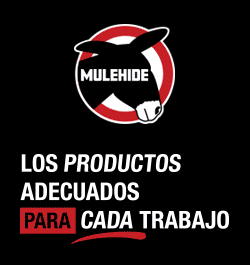



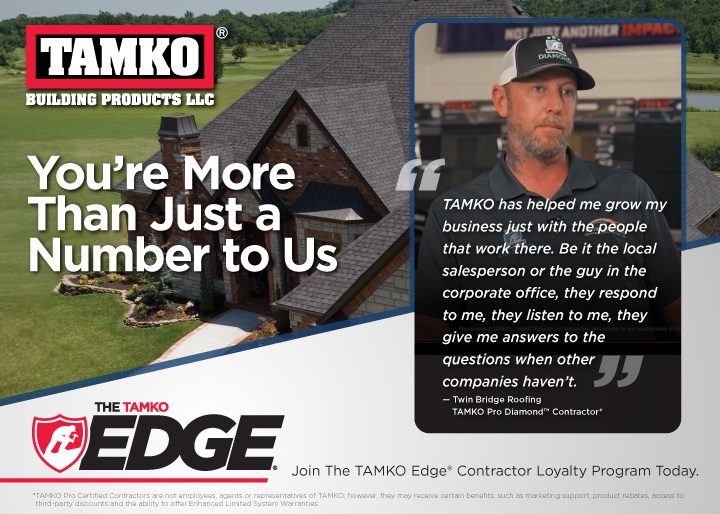



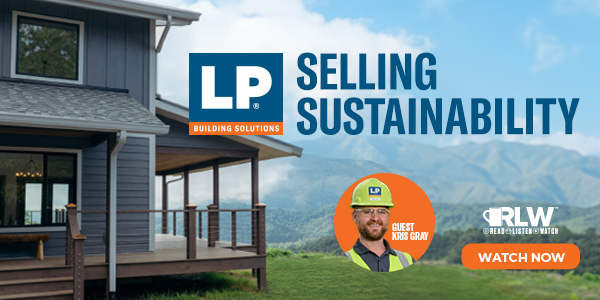
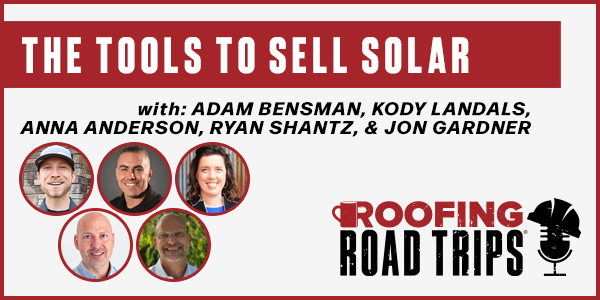
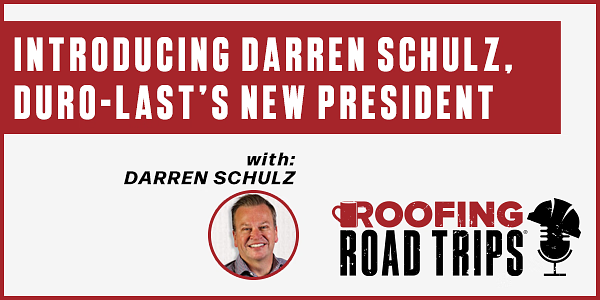
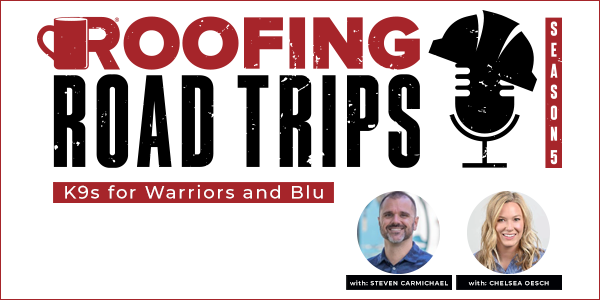


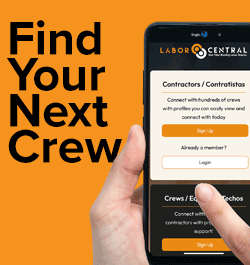

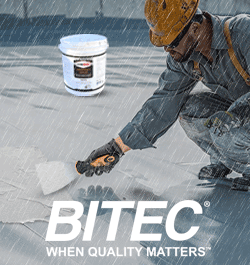
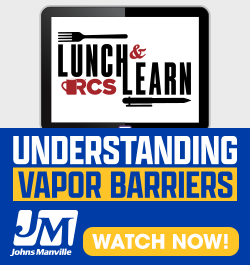
Comments
Leave a Reply
Have an account? Login to leave a comment!
Sign In